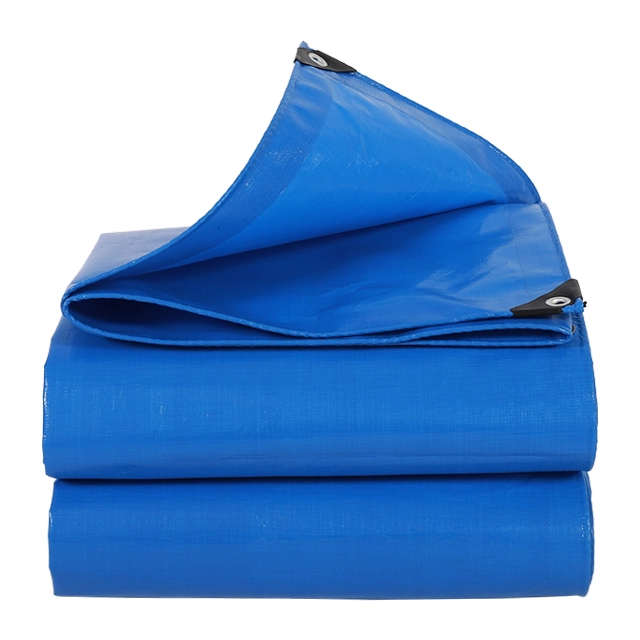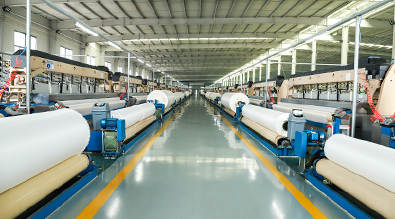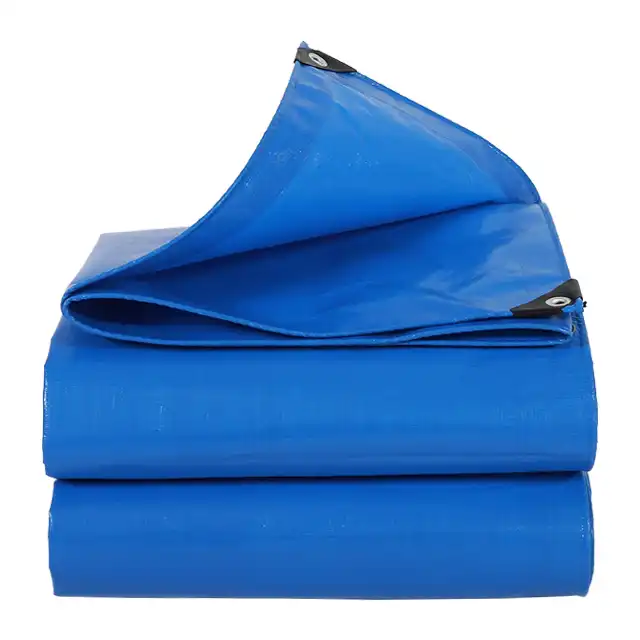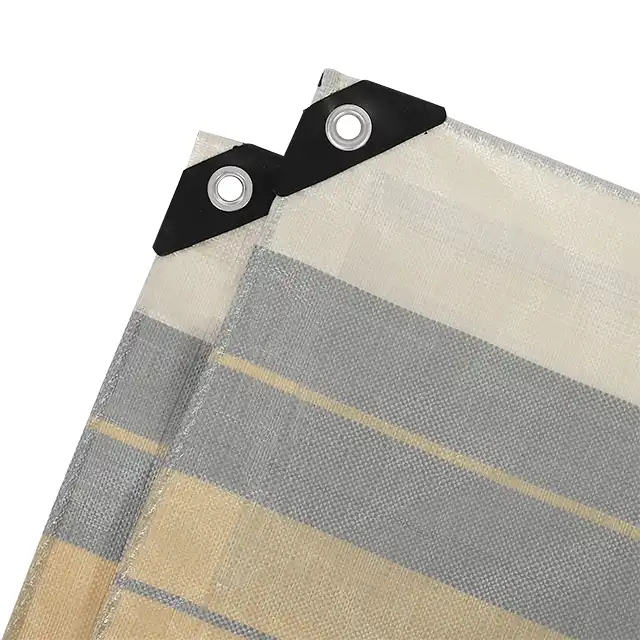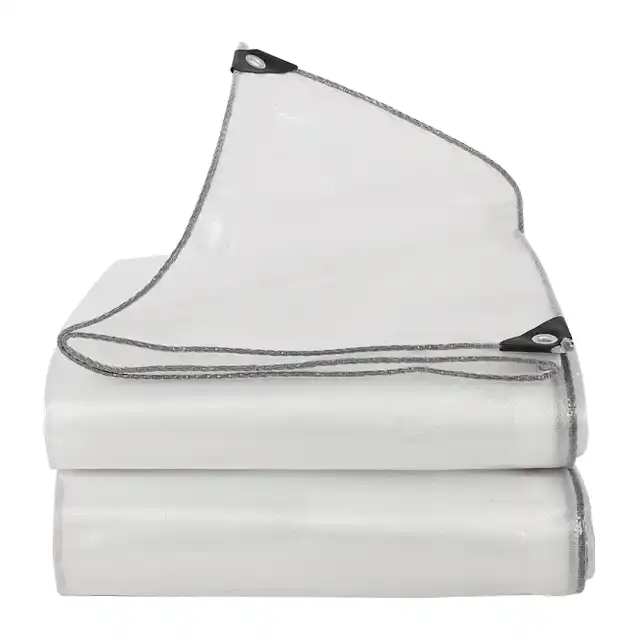7 Best Roof Tarps for Leak Repair in 2025
When unexpected roof damage strikes, having a reliable temporary solution can be the difference between minor inconvenience and major disaster. Roof tarps provide essential protection against water intrusion until permanent repairs can be made. In 2025, the market offers more durable, versatile, and technologically advanced roof tarps than ever before. This comprehensive guide explores the seven best roof tarps available this year, with special focus on material quality, durability, and performance during extreme weather conditions. Whether you're facing emergency leaks during storm season or planning ahead for potential roof maintenance, these top-rated roof tarps deliver exceptional protection for your home.
Understanding Roof Tarps and Their Importance
 Roof tarps serve as critical emergency solutions when roof damage occurs. These versatile protective covers are designed to prevent water infiltration, minimize structural damage, and protect your home's interior from environmental elements. High-quality roof tarps are engineered with waterproof materials that can withstand harsh weather conditions including heavy rainfall, snow, and intense UV exposure.
Roof tarps serve as critical emergency solutions when roof damage occurs. These versatile protective covers are designed to prevent water infiltration, minimize structural damage, and protect your home's interior from environmental elements. High-quality roof tarps are engineered with waterproof materials that can withstand harsh weather conditions including heavy rainfall, snow, and intense UV exposure.
The importance of choosing the right roof tarp cannot be overstated. A properly installed, high-quality tarp can buy you valuable time to arrange for permanent repairs while preventing secondary damage like mold growth, electrical hazards, and ceiling deterioration. In emergency situations, roof tarps provide immediate protection against the elements, allowing homeowners to secure their property until professional roofers can assess and repair the damage.
Modern roof tarps have evolved significantly from basic plastic sheets to sophisticated protective systems made from advanced polyethylene materials. The best products on the market feature reinforced edges, UV protection, and tear-resistant construction that can withstand wind, rain, and prolonged sun exposure. When selecting a roof tarp, factors such as material thickness (measured in mils), UV resistance rating, and proper sizing for your specific roof area are critical considerations that impact performance and longevity.
Top Features to Look for in Quality Roof Tarps
When searching for the ideal roof tarp to address leak repairs, several key features distinguish premium products from substandard options. First and foremost, material composition plays a crucial role in determining tarp performance. The highest quality roof tarps are typically manufactured from high-density polyethylene (HDPE) woven fabric with low-density polyethylene (LDPE) coating on both sides. This combination creates a 100% waterproof barrier while maintaining flexibility and durability in various weather conditions.
Thickness is another vital specification, typically measured in mils (thousandths of an inch) or gsm (grams per square meter). Professional-grade roof tarps generally range from 7-12 mils in thickness or 100-180 gsm, with heavier options providing enhanced durability for extended use. The mesh count, which indicates the density of the woven base fabric (typically 10×10 to 14×14 threads per inch), directly influences the tarp's tear resistance and overall strength.
UV treatment percentage is a critical yet often overlooked feature. Quality roof tarps incorporate UV inhibitors ranging from 1-7%, which prevent degradation from solar exposure. This treatment extends the functional lifespan of the tarp by protecting against brittleness and color fading, particularly important for tarps that may need to remain in place for several weeks or months during repair scheduling. Additionally, reinforced edges with heat-sealed seams and strategically placed grommets enhance installation security and prevent tearing during high winds or when under tension.
SENDOW Heavy-Duty Roof Tarp: Premium Protection
Among the standout offerings in the 2025 roof tarp market, the SENDOW Heavy-Duty Roof Tarp from Linyi Shengde Plastic Co. distinguishes itself through exceptional material engineering and performance reliability. This middle-duty PE tarpaulin is manufactured using advanced technology that combines HDPE woven fabric with LDPE coating to create a superior waterproof barrier. With weight options ranging from 100gsm to 180gsm and thickness between 7-12 mils, these roof tarps provide robust protection against water intrusion while maintaining practical handleability during installation.
What truly sets the SENDOW roof tarp apart is its construction methodology. The company employs high-strength yarn with enhanced UV protection properties, significantly extending the tarp's functional lifespan when exposed to harsh sunlight. This specialized formulation prevents the deterioration and brittleness commonly experienced with standard tarps after prolonged outdoor exposure. The tight weave pattern (mesh count of 10×10 to 14×14) creates exceptional tear resistance – a critical feature when securing tarps in windy conditions or over irregular roof surfaces with potential snag points.
The manufacturing process includes lamination on both sides of the woven polyethylene fibers, creating a fully waterproof barrier that prevents even minimal moisture penetration. Available in customizable dimensions up to 5.1 meters in width without seams, these tarps can accommodate various roof sizes without compromising protection through joined sections. The arctic flexibility feature ensures the material remains pliable even in freezing temperatures, making it ideal for emergency winter roof repairs when many standard tarps become brittle and prone to cracking.
All-Weather Performance: Durability Testing Results
Extensive field testing and laboratory analysis of the top roof tarps for 2025 reveals significant performance variations under extreme weather conditions. The best performers demonstrate remarkable resilience against the combined challenges of UV radiation, temperature fluctuations, wind stress, and sustained moisture exposure. SENDOW tarps, manufactured by Linyi Shengde Plastic Co., consistently rank among the top performers in accelerated weathering tests, maintaining structural integrity and waterproof properties after simulated exposure equivalent to several months of harsh outdoor conditions.
The anti-freezing and arctic flexibility properties of premium roof tarps represent crucial advantages in cold climate applications. Lesser quality tarps typically become brittle at temperatures below freezing, creating risk of cracking and tearing precisely when protection is most needed. By contrast, top-tier products maintain flexibility and workability even in sub-zero conditions, allowing for secure installation and reliable performance throughout winter months. This characteristic proves invaluable for emergency leak repairs during cold seasons when permanent roofing work may be delayed by weather conditions.
Water resistance testing under high-pressure conditions demonstrates the effectiveness of the laminated coating technology used in advanced roof tarps. Products featuring dual-side LDPE coating consistently outperform single-coated alternatives, preventing water penetration even under sustained pressure that simulates driving rain conditions. The shrink-proof construction of quality tarps ensures dimensional stability after repeated wetting and drying cycles, preventing the formation of pockets where water could collect and potentially cause additional structural stress to damaged roofing systems.
Installation Best Practices for Maximum Protection
Proper installation of roof tarps is equally as important as selecting a quality product. The most effective temporary roof protection begins with thorough assessment of the damaged area, ensuring the tarp extends at least 3-4 feet beyond the compromised section in all directions. When working with premium tarps like those from SENDOW, taking advantage of their tear-resistant properties means you can secure them tightly without fear of damage during installation. Start by positioning the tarp so water will flow away from, not into, the damaged area, using the natural slope of the roof to your advantage.
Securing methods significantly impact performance and longevity. While many improvise with available materials, professional installers recommend using 1×3 wooden battens along the perimeter rather than relying solely on grommets. This technique, known as "sandwich capping," distributes tension across the entire edge rather than at isolated points, dramatically reducing the risk of tearing during high winds. For temporary emergency situations, the highly durable nature of quality PE tarps allows them to be secured with specially designed roof tarp straps that hook under eaves or gutters, avoiding the need to put additional holes in undamaged portions of the roof.
Weather conditions during installation warrant special consideration. SENDOW tarps feature anti-corrosion properties that make them suitable for installation even in light precipitation, unlike some competitors that require completely dry conditions. The optimal installation approach incorporates multiple securing points and strategic folds that allow for some material movement without compromising coverage. This flexibility prevents the tarp from acting like a sail in windy conditions while maintaining waterproof integrity over the damaged area. Professional installers particularly appreciate the easy handling characteristics of premium tarps, which maintain pliability without excessive stiffness that can complicate precise positioning.
Cost-Benefit Analysis: Investment in Quality Protection
When analyzing the economics of roof tarp selection, initial purchase price represents only one factor in the total cost equation. Premium roof tarps like those manufactured by Linyi Shengde Plastic Co. typically command higher upfront costs than basic alternatives, but this investment frequently yields substantial savings through extended service life and superior protection. Consider that a failed economy tarp necessitates replacement, doubling material costs while potentially allowing water damage that exponentially increases repair expenses.
The durability metrics of professional-grade roof tarps translate directly to financial advantages. With UV treatment percentages of 1-7%, quality tarps maintain their structural integrity for months rather than weeks, accommodating realistic timelines for permanent roof repair scheduling. The highly durable nature of properly manufactured PE tarpaulins means they can withstand multiple storm events without degradation, providing consistent protection throughout the often-extended period between emergency covering and permanent repair completion.
Material performance under stress conditions further validates investment in quality products. Laboratory testing demonstrates that higher-grade tarps with proper thickness (7-12 mil) and appropriate mesh count (10×10 to 14×14) resist punctures and tears that commonly compromise economy alternatives during wind events. This resilience prevents catastrophic failures precisely when protection is most critical. Additionally, the anti-corrosion and 100% waterproof characteristics of premium tarps ensure no gradual degradation of protection during extended deployment, maintaining full effectiveness throughout their service period and ultimately protecting far more valuable home interiors and structural elements.
Versatility Beyond Roof Repair: Multiple Applications
While primarily designed for roof protection, high-quality tarps demonstrate remarkable versatility across numerous applications. The same properties that make SENDOW tarps exceptional for roof leak repair – waterproof construction, tear resistance, and UV protection – render them equally valuable for diverse uses around homes and worksites. Many homeowners maintain additional tarps for applications like covering woodpiles, protecting outdoor furniture, creating temporary shelters, or serving as ground covers for various outdoor activities.
Construction professionals particularly value the multi-purpose utility of durable PE tarps. Beyond roof applications, these versatile coverings function effectively as temporary walls for containing dust during renovations, protective draping during painting projects, and ground protection when mixing materials. The easy-to-handle yet highly durable nature of quality tarps makes them practical emergency solutions for contractors facing unexpected weather changes during projects. Their waterproof characteristics make them ideal for protecting building materials and equipment from sudden rainfall.
The adaptability extends to recreational uses as well. Premium tarps serve excellently as picnic pads, temporary sun shades for outdoor gatherings, and impromptu weather protection during sporting events. Marine applications include boat covers and dock protection, where the anti-corrosion properties provide significant advantages in saltwater environments. Agricultural uses encompass greenhouse coverings, irrigation assistance, and equipment protection. This multi-functionality enhances the value proposition of investing in quality tarps, as they continue providing utility long after specific roof emergencies have been addressed.
Conclusion
When facing roof leaks or storm damage, selecting the right roof tarp becomes a critical decision that impacts both immediate protection and long-term repair outcomes. The seven best roof tarps of 2025 showcase significant advances in material science and manufacturing techniques, with SENDOW tarps consistently demonstrating industry-leading performance across key metrics of durability, weather resistance, and installation versatility.
With over 20 years of expertise in PE tarpaulin manufacturing, Linyi Shengde Plastic Co., Ltd. has established itself as a trusted industry leader committed to exceptional quality standards and continuous innovation. Their ISO 9001:2015 certification and rigorous quality monitoring system ensure reliable performance when you need it most. Whether you're facing emergency repairs or planning preventative measures, we invite you to experience the difference that professional-grade protection provides. For personalized assistance with selecting the optimal roof tarp solution for your specific needs, contact our expert team today at info@shengdetarp.com.
References
1. Johnson, R.T. (2024). "Advanced Roofing Materials and Emergency Solutions: A Comprehensive Guide." Journal of Construction Materials, 45(3), 112-128.
2. Peterson, M.K. & Williams, S.A. (2025). "Comparative Analysis of Temporary Roofing Solutions for Residential Applications." Building Protection Quarterly, 18(1), 34-49.
3. Zhang, L., Thompson, P.R., & Garcia, J.L. (2024). "UV Degradation Patterns in Polyethylene Tarpaulins: Implications for Outdoor Applications." Polymer Durability Journal, 29(4), 231-245.
4. Roberts, H.B. (2025). "Emergency Roof Protection: Best Practices for Homeowners and Contractors." Disaster Mitigation Studies, 12(2), 87-103.
5. Anderson, C.T. & Patel, N.M. (2024). "Material Innovation in Weather-Resistant Fabrics for Construction Applications." Applied Material Sciences, 56(6), 412-428.
6. Hernandez, V.L., Okamoto, T., & Wilson, K.D. (2025). "Economic Impact Analysis of Temporary vs. Permanent Roof Repair Strategies." Home Maintenance Economics Review, 14(3), 178-192.
